Mark Sisson's Blog, page 205
October 24, 2016
Dear Mark: How Often Should I Supplement with Turmeric?
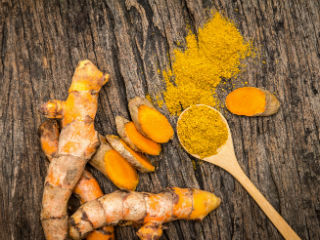 For today’s edition of Dear Mark, I’m talking about turmeric. Last week, I made an off-handed recommendation that people not eat high doses of turmeric, prompting a great question in the comments. Are there actual dangers to turmeric consumption? Is there something you folks should know? Does something perilous lurk within that yellow powder in your cupboard?
For today’s edition of Dear Mark, I’m talking about turmeric. Last week, I made an off-handed recommendation that people not eat high doses of turmeric, prompting a great question in the comments. Are there actual dangers to turmeric consumption? Is there something you folks should know? Does something perilous lurk within that yellow powder in your cupboard?
Not exactly, but I did make that recommendation for a reason. Let’s find out why:
This is the first I’ve heard that turmeric should not be taken regularly for the same reasons as liver and brazil nuts. I was already aware of the potential toxicity of overdoing liver or brazil nuts, but what are the dangers of turmeric for a normal healthy person? I understand the blood thinning aspects of it could be potentially harmful for someone already on blood thinners or is pregnant, but what about someone without any underlying issues?
My dog and I have turmeric and black pepper almost every day in our food or supplement form. Should I be scaling that back to 1 or 2 times a week like liver or just use it in low daily dosages like brazil nuts?
Ah yes, I did say that.
It’s not so much that turmeric is bad. There are real considerations, like the blood thinning issue (turmeric can inhibit clotting, so anyone already taking blood thinners like coumadin should ask their doctor before using turmeric) or the iron absorption issue (turmeric inhibits iron absorption, which is great for people with iron overload or hereditary hemachromatosis, but an unwanted side effect for people who need to absorb their iron). But I’m not really talking about those.
Consider the widely touted fact about turmeric absorption: Without black pepper providing piperine in the same meal, we’re just not very good at absorbing curcumin, the primary constituent of turmeric that everyone’s gaga over. It simply isn’t very bioavailable without the addition of black pepper.
Why don’t we absorb curcumin very well on its own? Could there be a reason for that?
Maybe, maybe not.
I hedge my bets. Obviously, curcumin and turmeric have proven health benefits. Studies—controlled ones, even—show that taking curcumin can do many incredible things for us:
Curcumin supplementation has shown promise in treating and preventing Alzheimer’s disease.
It recently compared favorably to a standard antidepressant in people with clinical major depression. It could also make antidepressant therapy more effective.
It improves lipid profile and reduces uric acid levels in patients with fatty liver.
It reduces overall oxidative stress in osteoarthritis patients.
I’ve written about turmeric many times before, so I won’t belabor the benefits.
However, is more always better? Should we eat as much turmeric as humanly possible?
Probably not.
Remember that polyphenols and other antioxidant compounds largely exert their beneficial effects via hormesis: by provoking a stress response that triggers secretion of our own antioxidants. With hormetic stressors, some is better than both none and too much. Curcumin is no different.
And we know that turmeric works really well in smaller doses, sometimes better than larger ones.
For instance, smaller doses of curcumin are better at reducing amyloid plaque in Alzheimer’s models than larger doses, and seniors who take low doses of curcumin enjoy a diverse range of metabolic and overall health benefits.
In populations where regular turmeric consumption is associated with health benefits, like India, they’re not treating the spice like a supplement. They’re cooking with it. They’re adding it to milk and ghee. For them, turmeric is one of many spices, not a wonder supplement they megadose. If the association is causal, small incidental food-borne doses are enough.
That’s why I use turmeric as a spice, as an ingredient. I mix it with pepper and add to my eggs. I make curry. I throw it in beef stews. And for very explicit, acute reasons, I might take a megadose now and then.
If I have an inflammatory issue, or maybe my old arthritis is acting up, I’ll have some turmeric tea with a hefty spoonful. A big dose of turmeric, black pepper, and the murkiest extra virgin olive oil you can find is fantastic before a night of drinking. If I had depression, I’d probably try curcumin. If I had cancer, I’d dig into the curcumin/cancer literature. If I was a lot unhealthier than I am now, I’d probably increase my intake. Studies show that in unhealthy populations or those with existing inflammatory issues like osteoarthritis, higher doses of curcumin work well.
But what about overall healthy people?
I don’t know about high doses. It’s probably fine, but what if it isn’t? Trust the body. Don’t override its natural regulation of bioavailability unless you know what you’re doing.
If you’re feeling fine, stick with your current intake and err on the side of lower intakes. If you’re treating a known condition, go higher. Great job giving it to your dog, by the way. I’ve been known to throw a few dashes of turmeric in my dogs‘ bowls and have heard good things from other dog owners.
I was just cautioning against people who saw turmeric on my “top supplemental foods” list and assumed they should make it 2% of their diet.
Thanks for reading, everyone. I’d love to hear your take on turmeric dosage.
Do you use it? How? As spice or supplement?
Take care.
The post Dear Mark: How Often Should I Supplement with Turmeric? appeared first on Mark's Daily Apple.



October 23, 2016
Weekend Link Love – Edition 423
 Research of the Week
Research of the WeekWalking slows memory decline in older folks already experiencing it.
Case study: fecal transplant cures celiac.
Researchers dig through poop and find new antibiotics that reverse drug-resistance in bacteria.
Not all of the genetic material Neanderthals bequeathed to us was negative.
Spending a few hours in the mountains changes your blood cells’ ability to retain oxygen in hypoxic environments.
New Primal Blueprint Podcasts
Episode 139: Allan Misner: Host Elle Russ chats with Allan Misner about fitness for people over 40.
Each week, select Mark’s Daily Apple blog posts are prepared as Primal Blueprint Podcasts. Need to catch up on reading, but don’t have the time? Prefer to listen to articles while on the go? Check out the new blog post podcasts below, and subscribe to the Primal Blueprint Podcast here so you never miss an episode.
Can Endurance Training Ever Really Be Primal?
How Expressing Your Emotions—or Not—Affects Your Health
Updating the Primal Stance on Vegetable Oils: High-Oleic Varieties
Interesting Blog Posts
Real women have meat (in their diet).
What happens when seven New Zealand dietitians try the paleo diet for four weeks?
How to bake bacon for a crowd.
Media, Schmedia
A group of health experts are urging British doctors to educate themselves about nutrition, exercise, and lifestyle.
A gorilla escaped from the London Zoo and, rather than head for the armory and begin a counter-sapien insurgency, drank five liters of blackcurrant syrup and probably gave himself a tummy-ache.
An elephant (just a baby, no less) shows signs of empathy, compassion, and concern for a friend. Really makes me think twice about springing for that ivory bed frame.
Everything Else
We may be creating as many species as we’re killing.
This guy really loves Bulletproof coffee.
I’m not sure what’s more unfortunate: the weed or the fact that a toddler gets an entire box of fries.
Cave paintings help researchers discover the elusive ancestor of the European bison.
Is reciting a tongue twister in your head just as hard as reciting it out loud?
Northern Ireland: land of giants.
An algorithm for fair cake-cutting.
Yes, that horse just ate that chicken.
Things I’m Up to and Interested In
Development I really want to share: I just launched the new Primal Kitchen YouTube channel. I’ve already made a few videos you might enjoy, so subscribe to stay tuned for new ones to come.
Product I’m excited about: You’ve heard me talk about the benefits of intermittent fasting, and my friend Jimmy Moore has just published a great book on it: The Complete Guide to Fasting.
A blog post I’m reading: “Self-Stereotypes and How to Overcome Them.”
Movement I’m loving: These Daily Vitamoves mobility exercises for the thoracic spine and shoulders.
Burying the lede: Media outlets report that capuchin monkeys are making stone knives, just like ancient hominids. Midway through we learn the stone knives are accidental byproducts of the monkeys smashing quartz into mineral-rich powder to lick.
Recipe Corner
Pressure cooker tomato sauce gives all-day flavor in about an hour.
Chicken salad with grapes and pecans.
Time Capsule
One year ago (Oct 23 – Oct 29)
What Does the WHO Report Mean for Your Meat-Eating Habit? – Is meat back off the table?
6 Hidden Superfoods You Probably Already Have in Your Pantry – Was I right?
Comment of the Week
“No dessert unless you eat your choccoli.“
– Indeed, Soupy.

The post Weekend Link Love – Edition 423 appeared first on Mark's Daily Apple.



October 22, 2016
Salisbury Steak
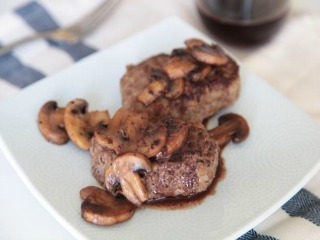 Salisbury steak, it’s been said, was named after Dr. J. H. Salisbury, a 19th-century physician and lover of ground and minced beef. Dr. Salisbury was convinced that meat, especially when ground up, could cure a wide variety of ailments. While some of Dr. Salisbury’s medical claims are a bit dubious, he was spot on with one: Food plays a huge role in a person’s health.
Salisbury steak, it’s been said, was named after Dr. J. H. Salisbury, a 19th-century physician and lover of ground and minced beef. Dr. Salisbury was convinced that meat, especially when ground up, could cure a wide variety of ailments. While some of Dr. Salisbury’s medical claims are a bit dubious, he was spot on with one: Food plays a huge role in a person’s health.
Salisbury steak is not usually considered health food. Blame it on T.V. dinners that pre-package Salisbury steak with mashed potatoes, corn, a brownie and lots of processed ingredients. But homemade Salisbury steak is comfort food you can feel good about—especially if you buy ground beef from a trusted butcher (or grind it yourself) to make sure you’re getting high-quality meat. If possible, buy grass-fed.
Mushrooms might not look like a powerhouse side, but they’re far from modest fare. Not only do they pair perfectly with beef, but they’re also good sources of nutrients like selenium, copper, and pantothenic acid. Many types of mushrooms also have therapeutic, medicinal, or otherwise pharmacological effects. This recipe, like most Salisbury steak recipes, calls for basic button or crimini mushrooms. Sauteed in butter, they don’t disappoint. For a fancier meal, throw shiitakes, chanterelles and porcini’s into the skillet as well.
Servings: 4
Time in the Kitchen: 35 minutes
Ingredients

1 ½ pound ground beef (680 g)
1 egg, beaten
1 large shallot, finely chopped
2 teaspoons Worcestershire sauce (10 ml)
1 1/4 teaspoon kosher salt (6 ml)
5 tablespoons unsalted butter, divided (75 g)
8 to 12 ounces button or crimini mushrooms, sliced (230 g)
½ cup red wine (120 ml)
1 1/2 cups beef stock (350 ml)

Instructions
Preheat oven to 350º F/177º C.
In a large bowl, mix together ground beef, egg, shallot, Worcestershire sauce, and salt. Shape into 4 oval patties.
In a wide skillet, melt 2 tablespoons/30 g butter over medium-high heat. Just as the butter melts, before it begins to brown, add the meat patties. Brown the patties, 3 to 4 minutes a side. Transfer to a baking dish covered with foil, and put in the oven until cooked through, 8 to 10 minutes.
In the same skillet, add another tablespoon/15 g butter and the mushrooms. Brown the mushrooms, and cook until soft, stirring as little as possible. Turn the heat down to medium if needed. Season with salt and pepper. Remove mushrooms from the skillet. Set aside.
Add red wine to the skillet. Simmer over med-high until reduced by about half, 3 to 5 minutes. Pour in beef broth. Simmer until reduced by half, about 12 minutes. Turn heat to low. Whisk in 2 tablespoons/30 g butter. Continue to simmer, if desired, for sauce with a more syrupy consistency.
Take the meat patties out of the oven. Cover with mushrooms. Drizzle sauce on top.
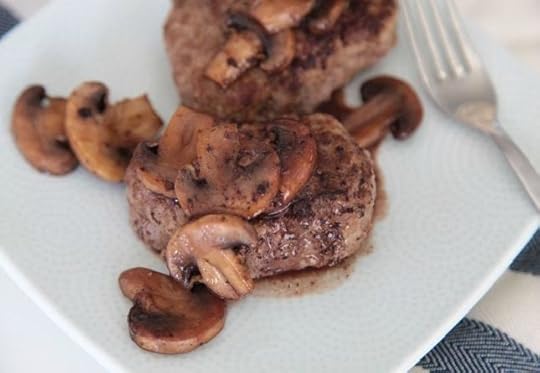

The post Salisbury Steak appeared first on Mark's Daily Apple.



October 21, 2016
It’s Not a Fad! How Primal Helped Me Maintain Long Term Weight Loss
It’s Friday, everyone! And that means another Primal Blueprint Real Life Story from a Mark’s Daily Apple reader. If you have your own success story and would like to share it with me and the Mark’s Daily Apple community please contact me here. In fact, I have a contest going right now. So if you have a story to share, no matter how big or how small, you’ll be in the running to win a big prize. Read more here.

My story begins quite a while back (the year 2000, let’s say) when I was in my mid-twenties. I had been pudgy since adolescence, and my diet was mostly junk paired with inactivity. Before I cleaned up my diet, I was eating 2 toaster pastries (over 400 calories) or a giant bowl of cereal with milk for breakfast, a fast food meal of a 1/4 pound burger (510) and medium sized fries (380 cals) with a large diet coke for lunch, and then having a small fast food chocolate shake (nearly 500 cals) for dinner most days and maybe something else that evening if I got hungry. I never exercised. I actually avoided moving and went out of my way to not sweat.
Fast forward to 2007 or 2008, and I heard about Mark through the “webvine”… not sure where you got mentioned on another website, but I stumbled across Mark’s Daily Apple and I even, get this…SUBSCRIBED to your newsletter.
But, I didn’t go Primal right away. In fact, I yo-yo’ed a few more times, up and down 25 or 30 pounds. Still refused to see the light. Didn’t want or think I could give up bread. Did you see Oprah and her Weight Watchers commercial? You know, the “I LOVE BREAD” one? Well, that was me. I was afraid of failing. Again. However, think I was really more afraid of success. I thought to myself, “Well, you have tried everything else, what have you got to lose?” I was topping out at about 153 pounds, by the way, and up to about a size 10 or 12.

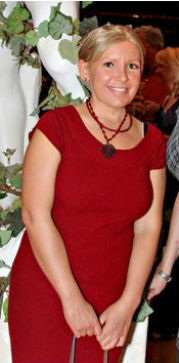
So finally in 2011, I threw out all the wheat and processed food in my house and began to use things like lettuce in place of buns or bread and even cut out potatoes completely for a while. I noticed results immediately, and by the end of June, I was down to 118 (and a size 2). It inspired me to try and help others and I started a website called Cavegrrl.com. My niche for the site is food, wine and travel, but I post Paleo and Primal recipes on the site and offer up restaurant suggestions for people who maintain a gluten free lifestyle.
I also found my partner Andy in 2011 and the luckiest thing is that he was already also Paleo. Unbelievable at a time when it had not been mentioned much on Dr. Oz or in the media as a “fad.” We are still together 5 years later because a couple that Paleos together, stays together!!
I am writing to you so that others can see what I have been through and realize they can do this, too. (Oh yeah, and there’s the contest I should win, too). We all have days that are stressful and sometimes we eat to “feel” our emotions instead of “fill” our stomachs. There are days when it sucks to get up early and workout. But the point of Paleo and Primal is not one isolated day, but a lifetime of a way of eating and moving. If you have a bad day, suck it up and move on! This is NOT a fad. Paleo is for life. I have maintained my weight loss within 5 pounds or so and now wear a 2 or 4. I workout every day in some way. I eat mostly plants with a little meat thrown in to make me strong. My body and mind are so balanced because of what I consume.

I hope Andy and I can eventually meet Mark so I can shake the hand of the person who taught me a few things to get the train back on track.
Thank you, Mark and the staff at Mark’s Daily Apple.
–Kristy DeVaney
The post It’s Not a Fad! How Primal Helped Me Maintain Long Term Weight Loss appeared first on Mark's Daily Apple.



Want to Join the Primal Kitchen Team? Become a Brand Ambassador!
 Calling all Primal Kitchen enthusiasts! Do you love our products? Does the idea of educating others on the benefits of wholesome, healthy, delicious ingredients pique your interest? Looking for some fun, flexible, part-time work? Then today is your lucky day! We’re expanding our Brand Ambassador teams in multiple cities across the United States. If you (or someone you know) meet the requirements from the list below, and you’re looking for work with lots of control over your schedule, please apply by filling out the application and emailing your resume to brittany.young@primalkitchen.com.
Calling all Primal Kitchen enthusiasts! Do you love our products? Does the idea of educating others on the benefits of wholesome, healthy, delicious ingredients pique your interest? Looking for some fun, flexible, part-time work? Then today is your lucky day! We’re expanding our Brand Ambassador teams in multiple cities across the United States. If you (or someone you know) meet the requirements from the list below, and you’re looking for work with lots of control over your schedule, please apply by filling out the application and emailing your resume to brittany.young@primalkitchen.com.
Go over our Brand Ambassador checklist and see if you’re a match. If you are, then you might be snagging one of the hottest positions in town.
Requirements:
You love hanging out in Whole Foods or your local natural grocery store
You have an outgoing personality and you’re incredibly charming and fun
You live a Primal lifestyle
You have a general understanding of why avocado oil is the best oil—and you’re not afraid to educate shoppers
You like to talk, especially about health and nutrition
You have wheels
You live in or near Los Angeles, Boulder, Boston, Dallas/Ft Worth, NYC, Missoula, Philadelphia, or Washington, D.C.
You have a smartphone (for recording information from your demo)
Click here to submit your application and email brittany.young@primalkitchen.com to become a Primal Kitchen Brand Ambassador today!
The post Want to Join the Primal Kitchen Team? Become a Brand Ambassador! appeared first on Mark's Daily Apple.



October 20, 2016
7 Primal Ways to Bridge the Parent Happiness Gap
 Particularly when you’re a parent, October can be a transitional month. I remember feeling like we’d just gotten the kids settled in school and suddenly we were knee deep in extracurricular activities, class projects, parent-teacher conferences—and the holidays. On my more exhausted days, I felt like we were navigating a two-month bender of parties and concerts, costumes and events. On the one hand, it was fun to see the kids’ excitement. It made for good memories, but it also exacted an extended toll. When every week is “special,” it’s wearing. These days life is simpler on the family front, but every once in a while I’ll remember those more frenetic patches. It’s easy to be nostalgic on the other side of the dogged years, but I haven’t forgotten the harder truth of parenting. Sometimes it’s a slog through overwhelm, and research reflects that much. But does it need to be as heavy as we often make it?
Particularly when you’re a parent, October can be a transitional month. I remember feeling like we’d just gotten the kids settled in school and suddenly we were knee deep in extracurricular activities, class projects, parent-teacher conferences—and the holidays. On my more exhausted days, I felt like we were navigating a two-month bender of parties and concerts, costumes and events. On the one hand, it was fun to see the kids’ excitement. It made for good memories, but it also exacted an extended toll. When every week is “special,” it’s wearing. These days life is simpler on the family front, but every once in a while I’ll remember those more frenetic patches. It’s easy to be nostalgic on the other side of the dogged years, but I haven’t forgotten the harder truth of parenting. Sometimes it’s a slog through overwhelm, and research reflects that much. But does it need to be as heavy as we often make it?
At issue is the so-called “happiness gap” observed by many studies when they compare parents and non-parents.
American parents, in particular, fare poorly with a 13% happiness “penalty” when juxtaposed with non-parents. Interestingly, researchers saw the gap shrink and even reverse for both mothers and fathers in countries that offered more advantageous parenting policies such as lower child care costs and added workday flexibility.
Other studies cite more family-oriented, nuanced factors involved in the happiness gap, such as the age of both parents and children. Older parents, for example, appear to be happier than parents younger than 25. Not surprising to anyone, parents of older children report greater happiness than those parenting kids under five. Authors of a meta-analysis of these studies cite the lack of sleep and additional housework reported by mothers in particular during these early years among the perceived influences.
Still, it’s not all bad news. A more recent study last year contradicted the notion of a static gap and found that American parents are increasingly trending happier compared to the general population, particularly parents in their later decades who may enjoy more social and economic support than non-parents. In other words, the work may be front loaded and the benefits shared along a longer arc of connection. As a parent of two young adults, I can see the truth here.
But how do we manage to more than just hold on during these intensive years? Can we close the happiness gap before the kids graduate from sippy cups, let alone high school ?
Are there ways to live with more ease and greater joy today, regardless of the latest developmental phase or logistical challenge?
While the answers may be numerous and decidedly personal, a Primal lens may have something to offer.
1. First things first: stop multitasking
It’s funny we’re as addicted to this practice as we are when research tells us we suffer as the result every time…parenting satisfaction included. A recent study found parents’ use of cell phones and other technology during parenting time fed not only their own emotional tension and information overload but increased their kids’ disruptive behavior.
But of course it’s not just about the technology. How many times do we attempt to do toggle back and forth through three different activities and two conversations? Who wouldn’t feel testy and spent after bookending the day with those kinds of hours?
There were plenty of days when my kids were young and my nerves were shot. I had to make the conscious choice to take in one thing at a time (often because I didn’t have the bandwidth to juggle any more). It sometimes meant redirecting the other child, letting him/her get into a small amount of trouble or letting the dishes sit. But I have to tell you, those dishes weren’t such a big hellish deal when I went back to them later after the kids were in bed and Carrie and I could talk for a bit while we finished them together. And the trouble? Rarely was there anything that required more than a couple minutes’ worth of effort.
2. When you feel the need to rush, slow down…way, way down
There were days when I let myself get caught in the frantic pace, when I thought I could harness speed to my advantage. The result left me harried and disconnected—not worth the presumed time savings.
When I got tired of feeling that time and again, I had to make a different choice. Maybe the to-do list wasn’t getting checked off as quickly, but I ended up accomplishing more overall and doing it better. There were fewer mistakes, fewer tantrums, more smiles, better sleep.
There’s also something pretty cool that happens with your kids when you drastically slow your own actions, talking and body language. Suddenly you’re moving at their tempo, and they know it. You’ll see their faces light up, their bodies relax. They’ll say and offer things they don’t normally do. The potential for connection gets charged in a whole new way.
And the whole household feels more relaxed.
3. Congratulate yourself on being an old-school parent
Living the Primal Blueprint offers its own incentive for viewing modern trappings with a healthy dose of skepticism. It doesn’t stop at parenting.
It used to be that kids ran the streets and trails the better part of the day and spent the rest raiding every cranny of the house to build elaborate forts, costumes and other constructions. They did so because that’s what instinct told them to do—to be active and creative…and because there was nothing else going on anyway. While these choices might not always be possible, most of us can probably stand to loosen the reins and back down from the management approach.
I caught a random article from the Washington Post today about a mother who decided to give up on elaborate fall festivals—you know, those overcrowded, elaborate events everyone drags their kids to for holiday card photo ops. Sometimes they’re fun, but most of the time they’re just not. And yet, as the author notes, they feel like a continual obligation to “good” parents who want to make memories with their kids. In the end, after years of growing fatigued by them, she gives up and spends the day at her sister’s carving pumpkins and making paper crafts at the kitchen table. Of course, the next year her kids vote for going to their aunt’s again for the same old school activities. It’s akin to giving your child an expensive present and watching the child play with a box for the next three hours.
In the backlash against materialism, we can sometimes get snagged in the equally fraught endeavor of gracing our children with extravagant experiences when they’d rather be home playing in the dirt.
There’s nothing wrong with going out, but it’s a matter of checking our motivations as parents. Are we doing something out of a sense of obligation or enjoyment? Who’s benefiting from our so-called enlightened, effortful parenting? Are we offering experiences or directing them?
Of course, anytime we go against the cultural grain this way we can feel like we’re not living up to expectations, that somehow our kids are missing out, that we’re getting a little too much out of the reduced effort. If the kids are healthy and happy (they might end up being much more so), derail the guilt train. Decide to embrace the countercultural identity, and give yourself a pat on the back for living your intention.
4. Apply the go-to question: “How can I make this work for me?”
It’s one of those life-changing questions that takes root first at the day-to-day level: How can I make this situation work for me? I ask myself this numerous times a week and sometimes a few times a day. I only wish I could’ve applied it as a parent, and I heard it from another parent a while back.
When faced with an outing, a chore, a tantrum, a project, what can make this endeavor easier to take? Maybe I can figure out a simplified version, create a little more enjoyable ambiance, find additional help or set desirable boundaries around it. Apply this principle to everything from the small daily tasks or to the big life questions.
On the daily level, that parent friend explained it was so: “If I have to do something I’m too tired to do or too worn out to enjoy or that will likely impose its own degree of stress or discomfort, I can in almost every case find something that will make it more palatable. If I have to bathe my 3-year-old at the end of a long, cranky day, I can make it more pleasant for myself by dimming the lights or plugging in Christmas lights. I can put in some bubble bath to give her a distraction. When I’m putting the kids to bed, I can take my time, change up a small part of the routine like doing something in a different room or have music going. I can have my favorite tea while we do bedtime stories so I feel like I don’t wait until 9:30 to begin the self-indulgent part of my evening.”
There were definitely times I did this, but I’ll admit it was more accidental tactic than continual intention. The result for her and as I apply it today is more joy. The funny thing is, the more we set the scene for our own pleasure and contentment, the more relaxed we are and the more positive another person’s response can be. We don’t even stop to think that what we want may be just the ticket for the four-year-old who had a bad day.
5. Loosen 50% of your standards
Of course, this isn’t an excuse to let a child’s basic needs and fundamental comfort be sacrificed. It just means most of us can safely (and even productively) push back on the perfectionist tendencies that often direct modern parenting.
Those of us in the elder generations, I think, are often grateful we didn’t parent in the days of Facebook comparison, not to mention Pinterest crafting hell. Carrie and I raised our kids certainly beyond the days when kids rode around in the back of a truck, but we did manage to dodge some of the escalation in social pressure that parents take in today.
When I talk with people about giving themselves a break (parents or non-parents for that matter), many of them concede one or two points. The only way you’ll gain appreciable sanity is to cut out uncomfortable shares of expectations you have for yourself and others. I’m not going to tell you what those should be, but take an inventory of every rule, standard and expectation you have. Now start hacking away.
6. Frequently ask, “What have you done for yourself today?”
Pleasure, rest, stillness, entertainment, euphoria. As a parent, you likely won’t get all of those in a day, but you can make one happen.
Five minutes—five intentional minutes. On a good day, you might have fifteen. If your kids are older or they have grandparents who like to get involved, maybe it’s an hour or two. An overnight is the jackpot. But start with five minutes because we all have that. If you ruin it with morbid reflection and chatty guilt, you’ve squandered the opportunity. Don’t take it as a sign that five minutes can’t count for anything.
Make a list because in the haze of parenting you may not remember what makes you feel good anymore. That’s okay. We all get a cheat sheet. In those five minutes, do one of those things on your list. Meditate, listen to a favorite song while you stretch out a bit. Read three pages of a good book. Eat a square of dark chocolate. Ask your partner to massage your neck. Whatever.
Now go back to parenting, but look for another break time. Then take advantage of it. Let it happen. Another five minutes. I recently heard a friend use the term “interval parenting” this way. I think that might be another PB runner-up principle.
7. Accept this as a season of your life
Finally, know that this phase, too, shall pass. You truly will get a decent night’s sleep again someday. You really will go on a couple’s vacation again. You’ll be able to reinvest in a hobby. Personal time and mental focus will eventually return. Until then, feel good about what you’re doing. Immerse yourself in the joys of it, and cultivate detachment for the rest. Build resilience and have faith in the bigger picture you’ll enjoy one day. Trust me, time softens the rough edges of all memories.
Thanks for reading today, everyone. What suggestions would you have for parents who are looking to regain some happiness ground? Share your experience (and hope), and enjoy the rest of your week.
The post 7 Primal Ways to Bridge the Parent Happiness Gap appeared first on Mark's Daily Apple.



October 19, 2016
The Benefits of Caloric Efficiency (and 10 Ways to Achieve It)
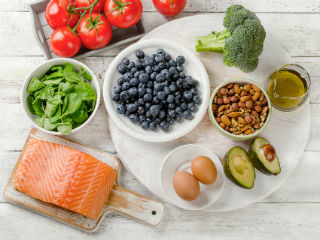 We really like to eat. We choose restaurants based on portion size. We work out just to increase our capacity for guilt-free gluttony. And even when we don’t actually like it, we still want it because the food industry employs experts in brain hedonic processing to engineer food products your brain literally cannot stop craving. As Louis CK put it, we don’t stop eating when we’re full, we stop eating when we hate ourselves.
We really like to eat. We choose restaurants based on portion size. We work out just to increase our capacity for guilt-free gluttony. And even when we don’t actually like it, we still want it because the food industry employs experts in brain hedonic processing to engineer food products your brain literally cannot stop craving. As Louis CK put it, we don’t stop eating when we’re full, we stop eating when we hate ourselves.
I’m not immune. In college, they called me Arnold, after the pig from Green Acres, because I could (and did) out-eat anyone. Linebackers 1.5x my size were no match. I love food, but I’m not interested in cramming as much food as I can get away with. Not anymore.
I’ve mentioned the concept of the minimum effective dose before, or the smallest dose that provides the desired outcome or effect. This applies to exercise, to sunlight, to carb intake, and to calories in general.
It is this caloric efficiency that describes my goal for the last dozen years: How little can I eat and retain or build mass, have optimal energy, never get sick and still NOT GO HUNGRY?
There are some obvious reasons to strive for caloric efficiency.
It’s expensive, especially if you eat high-quality food like pastured animals and organic produce.
It’s wasteful. We can eat 4000 calories a day, but should we? It won’t last forever, especially if it’s the quality food described in the previous point.
It’s unnecessary. While I could eat 1000 more calories and probably stay as lean as I am (and perhaps even gain more muscle), I can’t come up with a good justification for doing it. I’m happy, fit, and productive already.
But maybe the biggest reason to achieve caloric efficiency is that caloric restriction has the most support in the longevity research literature, with even a 10% calorie reduction having a powerful effect on mortality. Only the way most people do it—by limiting protein so much that you waste away and fail to complete a single pushup, restricting everything delicious, leading an ascetic existence, losing your sex drive, obsessing over everything that enters your mouth—doesn’t appeal to me.
If I can eat less food and feel satiated, not feel restricted, stay active, maintain and even improve my fitness, look good naked, remain productive, and quite possibly live a little longer—why wouldn’t I give it a shot?
Sounds pretty good to me. Okay, so how can we make it happen?
1. Become a fat-burning beast
When you’re able to tap into your own stored adipose tissue for energy between meals, you don’t need to snack. You’re not hangry because it’s 2 PM and the break room donut box is empty. You just coast along until your nutrient-dense dinner, smoothly evading high-calorie, low-nutrient junk food.
2. Get your sleep
The sleep deprivation epidemic is one of the primary causes of our junk food addiction. If that sounds ridiculous, get a load of the research showing that the brains of sleep deprived humans are more susceptible to high-reward junk food.
3. Limit refined fats, emphasize nutrient-dense fats
Don’t choose highly refined avocado oil, choose virgin avocado oil. Pass on the pale olive oil and spring for the murky green stuff. Get red palm oil instead of refined palm oil and yellow grass-fed butter instead of butter the color of chalk. If you want to thicken a sauce, stew, or curry, toss and stir in a couple egg yolks after turning off the heat.
This stuff matters. Avocado oil has a slew of benefits, EVOO has reams of literature support, red palm oil is the single best source of vitamin E (and the CoQ10 doesn’t hurt, either), and grass-fed milkfat has superior metabolic effects to corn-fed milkfat. I don’t have to list the virtues of egg yolks, do I?
4. Avoid refined sugar
If you need to add sweetness, choose a sweetener that gives back. Honey? Provides a broad spectrum of low dose micronutrients. Blackstrap molasses? Full of calcium, magnesium, and potassium. Maple syrup? Loaded with manganese. Date paste? Rich in polyphenols and fermentable fiber. Even the completely processed sugar substitute xylitol offers protection against cavities that regular sugar doesn’t.
Any infusion of sucrose, glucose, and fructose has its downsides, but it’s better if it comes packaged with phytonutrients, pollen remnants, and discarded bee limbs.
5. Choose better carbs
Say you want to eat some “carbs.” Maybe you’re refiling glycogen or something. What’s the better choice? Which provides tons of other nutrients you need in addition to the carbohydrate?
A potato starch pancake or a baked potato?
A bag of gluten-free pasta made of rice flour that cost you $8, or a serving of sprouted wild rice cooked in real bone broth?
A scoop of waxy maize in the shake or a half cup of (dare I say it?) black beans?
It all boils down to playing with the margins. Getting little wins where you can.
6. Eat your plants
Most fibrous, green, leafy, and/or brightly-colored fruits and vegetables are basically non-caloric. The carbohydrates are negligible (you probably use more glucose digesting non-starchy vegetables than they contain) and they’re inherently self-limiting; you can’t stuff yourself on greens. No one is carbing up with a salad bowl full of a couple pounds of steamed kale before a race, unless it’s a race to the nearest toilet. The higher sugar fruits can add up, but even those are hard to overdo unless you’re slamming peach after peach.
Yet they’re incredibly dense with micronutrients.
7. Try cheat days
A cheat day or meal is a release valve. By setting aside a day every week or two to eat whatever you want, as much as you want, it’s easier to eat more sensibly and efficiently during the rest of the week.
8. Focus on eating enough protein-rich foods first
For several reasons this is important:
Protein is the most satiating macronutrient. Research shows that higher protein intakes induce the most satiety and promote inadvertent calorie reduction, both of which are necessary to attain caloric efficiency.
Adequate protein protects against diet-induced muscle loss. This is particularly relevant for CRONers, who tend to waste away on their journey to immortality.
Protein-rich foods are the most nutrient-dense. Think of liver, eggs, wild salmon, sardines, oysters, mussels, and steak and you’re thinking of some of the best sources for iron, zinc, vitamin A, B-vitamins, omega-3s, copper, choline, manganese, and plenty of others. Even the most protein-dense plant foods—legumes—are extremely rich in micronutrients. Just make sure you focus on protein-rich foods rather than protein. Protein powder is certainly an effective tool, but it should never be the basis of your diet.
9. Set up an account with a food tracking app or website, track your 30-odd most common foods, and determine their caloric efficiency
Everyone’s ideal “caloric efficiency” diet is unique. Figuring out the caloric efficiency of the foods you already eat will help you structure your diet better than I could. Aim to fill those RDAs.
10. Survey the list of supplemental Primal foods and aim to eat them regularly
A couple years ago, I wrote a list of the most important “supplemental foods” that any Primal eater should be including:
Egg yolks
Liver
Seaweed
Turmeric
Bone broth
Bone marrow
Shellfish
Aged cheese
Natto
Small whole fish
Red palm oil
Brazil nuts
Purple or blue foods like berries, purple sweet potatoes, and vegetables
Fermented food
Because they’re so nutrient-dense, you don’t need to eat them in huge amounts. In the case of certain ones like Brazil nuts, liver, and turmeric, you probably shouldn’t eat them all the time because you risk overdoing certain critical nutrients (selenium, vitamin A, and hormetic polyphenols, respectively).
I also wrote another post on important Primal foods, with some repeats and a few more specific recommendations.
So that’s about it, folks.
What do you think about caloric efficiency? How do you strive to make your diet more efficient?
Thanks for reading.
The post The Benefits of Caloric Efficiency (and 10 Ways to Achieve It) appeared first on Mark's Daily Apple.



October 18, 2016
Can Endurance Training Ever Really Be Primal?
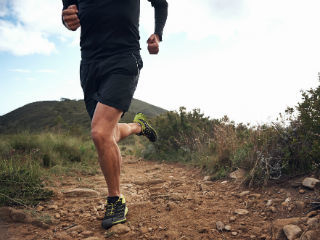 For over a dozen years, I’ve railed against what I call “chronic cardio“—the excessive, unrelenting endurance training I did for the better part of three decades. Most of my health issues cleared up when I stopped stopped running and training for marathons and triathlons, removed the refined grains and sugar I ate to support my endurance training, and began taking it easy. Explore the MDA archives and you’ll read all about the downsides of chronic endurance training, as well as my experiences in that world. Next to Primal living, most people probably know me best for being against “chronic cardio.” It’s kinda my thing.
For over a dozen years, I’ve railed against what I call “chronic cardio“—the excessive, unrelenting endurance training I did for the better part of three decades. Most of my health issues cleared up when I stopped stopped running and training for marathons and triathlons, removed the refined grains and sugar I ate to support my endurance training, and began taking it easy. Explore the MDA archives and you’ll read all about the downsides of chronic endurance training, as well as my experiences in that world. Next to Primal living, most people probably know me best for being against “chronic cardio.” It’s kinda my thing.
As a result, a lot of people have this idea that any type of endurance training is verboten and totally antithetical to the Primal way of life.
That’s a misconception, albeit an understandable one. But it’s persistent. I have been outspoken against chronic cardio. I’ve also released a book called Primal Endurance.
How do I square my distaste for chronic cardio with the fact that I wrote an entire book devoted to endurance training?
First, what am I talking about when I say “chronic cardio”?
Chronic cardio is excessive. The occasional big effort doesn’t count. Even running a 10k on the weekends isn’t enough to qualify. Running a marathon once isn’t chronic. Running marathons every month and training for them 3-5 days a week, making every workout a breakthrough one, and running every single day are all examples of chronic cardio.
Chronic cardio exceeds the aerobic threshold. An easy run through your favorite forest trail, a long hike, or a basic jog on the weekend with a buddy, both of you holding a conversation the entire time, are great ways to pass the time. They allow you to stay under the aerobic threshold where you’re predominately burning fat and away from the anaerobic threshold where sugar burning dominates. That’s the type of slow moving I encourage.
For endurance training to qualify as chronic cardio, you have to engage in day-in, day-out, moderate-high intensity, high volume training. It’s not so intense that you can’t keep it up for 5-10 miles, but it is intense enough that you’re burning primarily sugar. That’s the no-man’s land of chronic cardio—not too hard, not too easy, just right (wrong).
I hesitate to offer a quantitative definition.
I’ve tried to give a few rough guidelines, like “don’t burn more than 4000 calories a week through exercise.” But there’s no red line in the sand, where doing x number of miles per week catapults you into chronic cardio territory. It’s relative. It depends on your fitness level, health status, and age.
It’s often qualitative.
Does your endurance training leave you feeling mentally exhausted and depleted? When it’s over, are you dreading the next one? Do you actually enjoy the session as it’s happening, or is it sheer misery from start to finish?
You know it when you see it, in other words.
Why is chronic cardio bad for us? Isn’t all exercise good?
Sorta. But some types are definitely better than others. For instance:
Chronic cardio causes chronic inflammation. Any training session acts as a stressor and increases oxidative stress. Endurance exercise works by triggering a stress response that we must overcome and get better at overcoming. This is the training effect. But for the training effect to occur, we must rest and recover.
Because they train so hard at a high enough intensity, people engaging in chronic cardio never fully recover from that initial burst of oxidative stress. Not only does this impair training gains, it heaps stressor upon stressor, inflammation upon inflammation, and causes damage down the line. Acute oxidative stress stacks up and becomes chronic.
Chronic cardio enthusiasts often have undiagnosed heart issues. Excessive endurance training can cause excessive hypertrophy of the heart tissue. More than a few friends and colleagues over the years with whom I trained and competed have had to install pacemakers and defibrillators before the age of 40 to stave off heart problems stemming from this. Others have lost cardiac function. Some have even died. These are the super fit, the cream of the crop. And it’s not just my own anecdotes. Evidence suggests that long term chronic cardio increases the risk of atrial fibrillation and atrial flutter.
Chronic cardio makes you fatter, not fitter. We’ve all seen (or experienced) it. Overweight person attempts to not be overweight, picks up a running habit, sticks to it, is always ravenous, feels they’ve “earned” a brownie or small fries or chicken nuggets because they ran that day, rinse/repeat, stays the same size if not a little chubbier around the middle.
Chronic cardio turns you into a sugar-burner who always needs a fix and can’t go two hours without eating. It turns you into an inflamed stress ball (not the kind you squeeze). You’ll probably lose weight, but it’ll mostly be muscle. A recent paper even found that replacing some of your aerobic activity with 20 minutes of weight training each day resulted in the greatest reduction in waist circumference—perhaps the best marker of fat loss without getting a DXA scan.
So…endurance training is off the table?
No, but it’s important to do it right.
Brad Kearns and I wrote Primal Endurance to provide a better, safer, gentler way for endurance athletes to keep doing what they love. The coolest part of all is that it’s ultimately more effective than the the old chronic cardio way, which is to brute force your training. Go hard as you can, as long as you can, as often as you can, and your times will improve. And it “works”, but many fall to the wayside, only the strong truly thrive, and even they come up limping to the finish.
So PE is partly a mitigating force. Endurance athletes are a stubborn breed. I certainly was (and still am). You have to be to put up with all that pain and suffering. And the vast majority of them are going to run (and bike, and swim, and all the rest) despite what studies and experts and oftentimes their own bodies are telling them. It’s addictive, and it can be very rewarding. I’ve been there.
Primal Endurance offers a way for endurance junkies to maintain their habit, make it healthier and perhaps even more effective.
But you do have to embrace the entire program for it to work. A successful (and by successful, I mean performs well and stays healthy) Primal endurance athlete must:
Pay attention to sleep, recovery, stress. Sleep is where fitness develops.
Exercise patience, build up slowly. They can’t get ahead of themselves and go too fast too soon.
Focus on aerobic work. The long, easy, slow stuff is where the magic happens and the base develops.
Supplement their aerobic work with supplemental inputs. Aerobic work is necessary but not sufficient. They have to strength train, include some high intensity work, do mobility work and stretching, get massages when possible or spend some time on the foam roller. And don’t forget to have fun, to play and engage in leisure activities.
By all accounts, it’s a superior training method that builds an incredible aerobic base and allows you to reduce your training volume and intensity while compromising neither health nor performance.
Ultimately, Primal Endurance is a response to traditional forms of chronic cardio. It repudiates and replaces chronic cardio. It provides what so many seek when they strap on the jogging shoes, sign up for the 10k, or train for the half marathon—increased fat-burning capacity, improved aerobic fitness, greater fuel efficiency—without compromising health or performance.
The major impediment to widespread adoption of the PE methods is disbelief: It’s hard to believe that going easier can improve your fitness, performance, and health. That doing less can actually be more.
But it works. And things are changing. Elite athletes are adopting more Primal-friendly methods. The book is selling really well, and we’ve developed a comprehensive multimedia online course for folks who want to become fat-burning Primal Endurance beasts.
That goes for everyone, not just the elites or dedicated amateur athletes. Newbies and laypeople and weekend warriors and total non-athletes can all benefit from having a broad aerobic base and improving their fat-burning capacity.
The reason PE works for everyone is that it tailors the intensity to the individual’s ability. I don’t care if you’re Lance Armstrong, Rich Froning, Serena Williams, or grandma. If you follow the Primal Endurance training philosophy and keep your HR at 180 minus your age for the majority of your training, you’ll build a sturdy aerobic base and gradually increase your aerobic efficiency. This is good for runners, cyclists, triathletes, wrestlers, CrossFitters, Spartan racers, gardening enthusiasts, power walkers, sprinters, weight lifters, P90Xers, basketball players, and yard putterers.
To sum up, endurance training is Primal. You just have to do it the right way.
I’d love to hear how you’ve incorporated endurance training into your Primal way of life? What worked, what didn’t, what changed?
Thanks for reading, everyone. Take care!
The post Can Endurance Training Ever Really Be Primal? appeared first on Mark's Daily Apple.



October 17, 2016
Dear Mark: Is a High-Carb, Low-Protein Diet Best for Longevity?
 For today’s Dear Mark, I’m answering a question about the optimal diet for longevity. An article sent in by a reader claims that a recent mouse study has identified the perfect diet for everyone, but especially for older people: a high-carb, low-protein one. They even manage to throw in some stuff maligning the paleo diet (they just can’t resist).
For today’s Dear Mark, I’m answering a question about the optimal diet for longevity. An article sent in by a reader claims that a recent mouse study has identified the perfect diet for everyone, but especially for older people: a high-carb, low-protein one. They even manage to throw in some stuff maligning the paleo diet (they just can’t resist).
Find out below if the claim holds water. Let’s go:
Hey Mark,
What’s your take on this new study claiming that the best diet for longevity is a high-carb, low-protein one?
Interesting paper. Here’s how it went:
Researchers placed mice on a bunch of different diets to see how they’d affect levels of fibroblast growth factor 21, or FGF21. The 25 diets ranged from 5-60% protein and 5-75% fat or carbohydrate. They tried pretty much every permutation and found that the low-protein, high-carb combo produced the greatest increase in FGF21.
Why FGF21?
FGF21 “plays a role” in longevity, immune and metabolic health, energy metabolism, and appetite. Implicit in the study’s aims is that higher FGF21 is a good thing. It helps us live longer and healthier. If all that’s true, of course we’d want to find the macronutrient ratio that increases FGF21 most.
FGF21 is ultimately a marker of mitochondrial stress (PDF). By doing things that boost FGF21—which include fasting, low-calorie diets, low-carb/high-fat diets, and even acute exercise—we are applying a moderate amount of stress to our mitochondria. This is a good thing, provided the fasting doesn’t lapse into starvation, the diets don’t become chronic deprivation diets, and you allow sufficient recovery from the exercise. It’s hormesis: apply a stressor and bounce back stronger than before.
And sure enough, FGF21 does some good things, like helping us transition into ketosis and improves glucose control. Researchers are even exploring it as treatment for various metabolic disorders, obesity, and diabetes.
With most hormetic stressors, the benefits turn into negatives if the exposure persists or accumulates. There’s the chance of getting too much of a bad thing.
Is there any evidence of too much FGF21 being bad for us?
Among Chinese males, those with the highest FGF21 levels are more likely to have a heart attack and to have another within 30 days of the last one.
Both the highest and lowest FGF21 levels are associated with an increased risk of cardiovascular disease and death from heart attack.
Higher levels of FGF21 are linked to fatty liver, cardiovascular disease, and other metabolic disorders.
Independent of other risk factors, high serum FGF21 predicts the severity of atherosclerosis.
FGF21 may not be causing these things, but its elevated presence is at least a marker of something bad going on.
What does this all mean?
We have human evidence that various FGF21 genetic variants can help determine how well a person does on high-carb diets and low-carb diets. Those with the C variant lost more weight, waist circumference, and body fat on a high carb diet and less on the low-carb diet. Meanwhile—and this wasn’t reported in the study abstract—those with the T variant lost more weight, body fat, and waist circumference on the low-carb diet and were still losing body fat after two years.
I guess what I’m saying is this: Go with the diet that works for you.
Losing body fat on a diet? Keep it up.
Feel good? Keep eating the way you’re eating.
Don’t eat constantly—get hungry in between meals.
Fast if you can handle it. Men may be better at it than women.
All these things will increase FGF21 in the manner that’s likely to be healthiest without getting into excessive, chronic elevation.
What about the original article’s contention that older people should eat high-carb, low-protein diets to stave off death?
Nonsense.
We know that in older individuals, a higher protein intake is healthiest because as we age, we get less efficient at processing protein. We need more protein. Research shows that more protein promotes all the things we need to remain healthy and functional as the years accumulate.
Seniors who eat a half pound of red meat each day enjoy better physical function, get stronger, and build more lean muscle mass. That lean mass becomes ever more important the older we get. It’s a reserve for illness, injury, and bedrest. It keeps us spry and vibrant. It makes us strong; strong enough to take care of ourselves and actually engage with the outside world.
More protein (via red meat) also improves cognitive function in older adults. If you can’t use your brain, a long life gets a whole less enjoyable.
Seniors need higher protein intakes to maintain ever-critical bone density. A fractured hip is terrible for longevity.
I’ll have more to say about diet and longevity later. Bur for now, don’t tell Grandpa to ditch the protein and start slamming carbs.
That’s it for this week, folks. Take care and be sure to leave a comment down below!
The post Dear Mark: Is a High-Carb, Low-Protein Diet Best for Longevity? appeared first on Mark's Daily Apple.



October 16, 2016
Weekend Link Love – Edition 422
 Elle Russ had a great chat with Dave Asprey. Good stuff.
Elle Russ had a great chat with Dave Asprey. Good stuff.
It’s the last week to grab some free bonuses with your copy of Primal Blueprint Publishing’s newest title, The Paleo Primer: A Second Helping.
Research of the Week
American kids are among the world’s least fit.
Staying physically and mentally active reduces cognitive decline.
“Tech rage“: Americans are apparently throwing, sobbing into, and screaming at their smartphones on a regular basis.
Humans truly are domesticated.
New Primal Blueprint Podcasts
Episode 138: Elizabeth Resnick: Host Elle Russ hangs out with former MDA success story about her transition from a vegan diet, how going Primal helped her skin, digestive, and anxiety issues, and how the shift has changed her life.
Each week, select Mark’s Daily Apple blog posts are prepared as Primal Blueprint Podcasts. Need to catch up on reading, but don’t have the time? Prefer to listen to articles while on the go? Check out the new blog post podcasts below, and subscribe to the Primal Blueprint Podcast here so you never miss an episode.
The Definitive Guide to Wine
6 Reasons Mistakes Are Important For Success
Why the Variety of Your Protein Sources Matters
Interesting Blog Posts
Eating 3-4 egg yolks a day could improve your blood lipids and reduce liver and belly fat, if this rat study is to be believed.
Soylent stops selling its food replacement bars after customers complained of nausea and vomiting.
Warming up, or learning up?
Media, Schmedia
In an exceedingly safe world, the biggest danger children face is the moralizing stranger.
A Silicon Valley techie wants to reduce smartphone addiction despite working in an industry that depends on it for growth. Can he succeed?
Big Soda has pumped big money into major health organizations to suppress information about the health effects of sugar consumption.
Everything Else
When automation fails, we’re not always ready to assume control.
Man, I want to see what this guy can do on a Bosu ball.
In the future, electronic cutlery will make your broccoli taste like chocolate. Gross.
Did primate evolution begin in India?
A new lawsuit claims Pepsi’s Naked Juice isn’t actually healthy.
A vegan tourist arrives in New Zealand, discovers they have sheep, is triggered.
“The whole world is in your lap.”
Gluten-free has really come a long way.
And now, bears playing with balloons.
Things I’m Up to and Interested In
Deal of the week: I’ve partnered with Dry Farm Wines to give you a fantastic deal on some truly Primal-approved wines.
Product I’m excited about: Purple sweet potatoes have reappeared at Whole Foods.
A quote I found helpful, particularly given the current political/media climate: “Dwell on the beauty of life. Watch the stars, and see yourself running with them.”—Marcus Aurelius.
The blog post that most piqued my interest: “The Secret Life of Trees”—Another tree article? Yep. As you read, consider the dichotomy between the organic, bottoms-up nature of tree community support systems and the government-ordained, top-down system we have. Which is more Primal?
My favorite fun (and also mindblowing) fact of the week: The universe contains 10 times more galaxies than previously thought (PDF).
Recipe Corner
Crispy roasted pig face. Oh, and I think there are some leaves in there, too.
Straight from the birthplace of pasta comes Hawaiian spaghetti.
Time Capsule
One year ago (Oct 16 – Oct 22)
A Brief History of U.S. Dietary Guidelines – What have they been telling us to eat all these years?
Health Perspective for Every Stage of Life: Part 2 – How should oldsters approach health?
Comment of the Week
“My favorite oil is melted butter”
– Great choice, wildgrok.

The post Weekend Link Love – Edition 422 appeared first on Mark's Daily Apple.



Mark Sisson's Blog
- Mark Sisson's profile
- 199 followers






